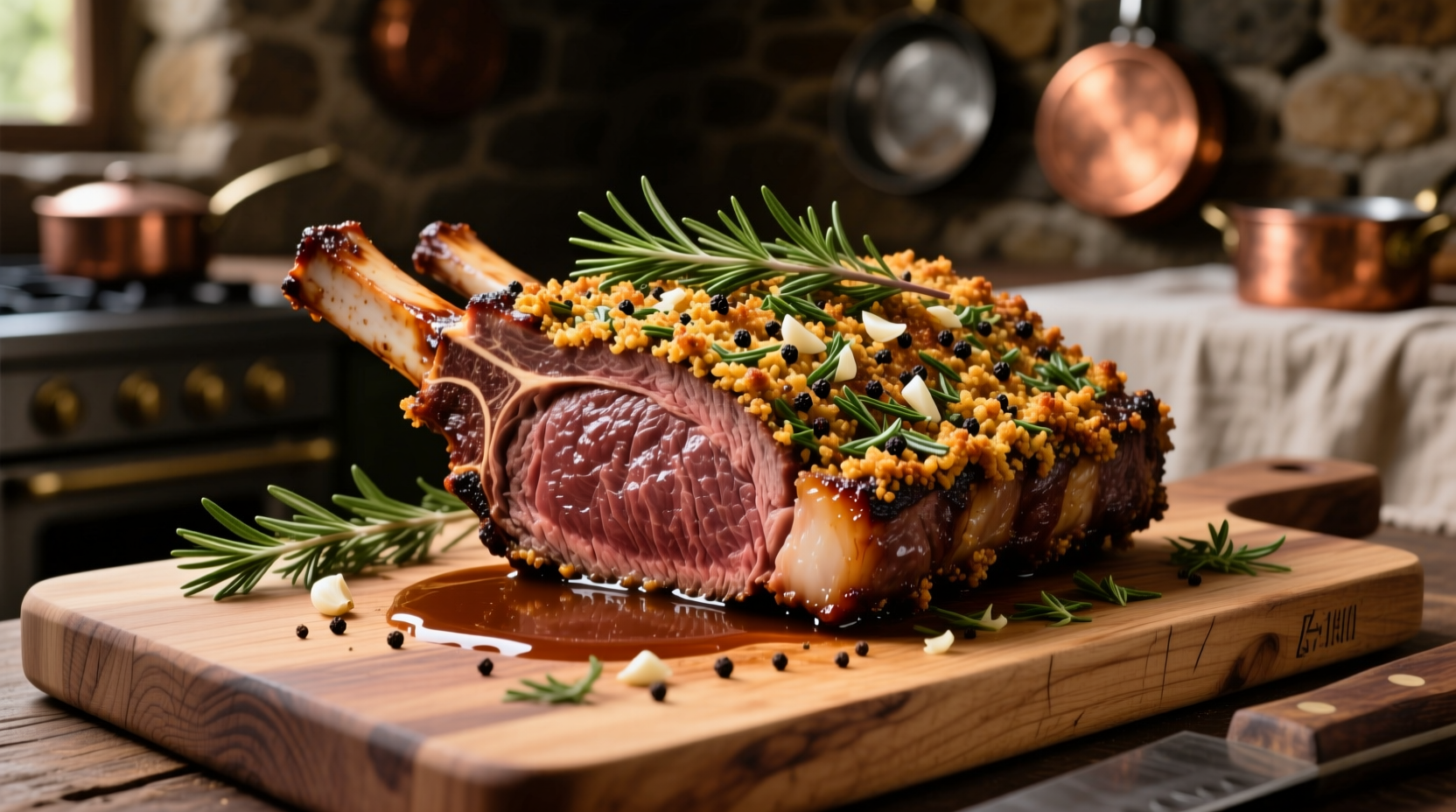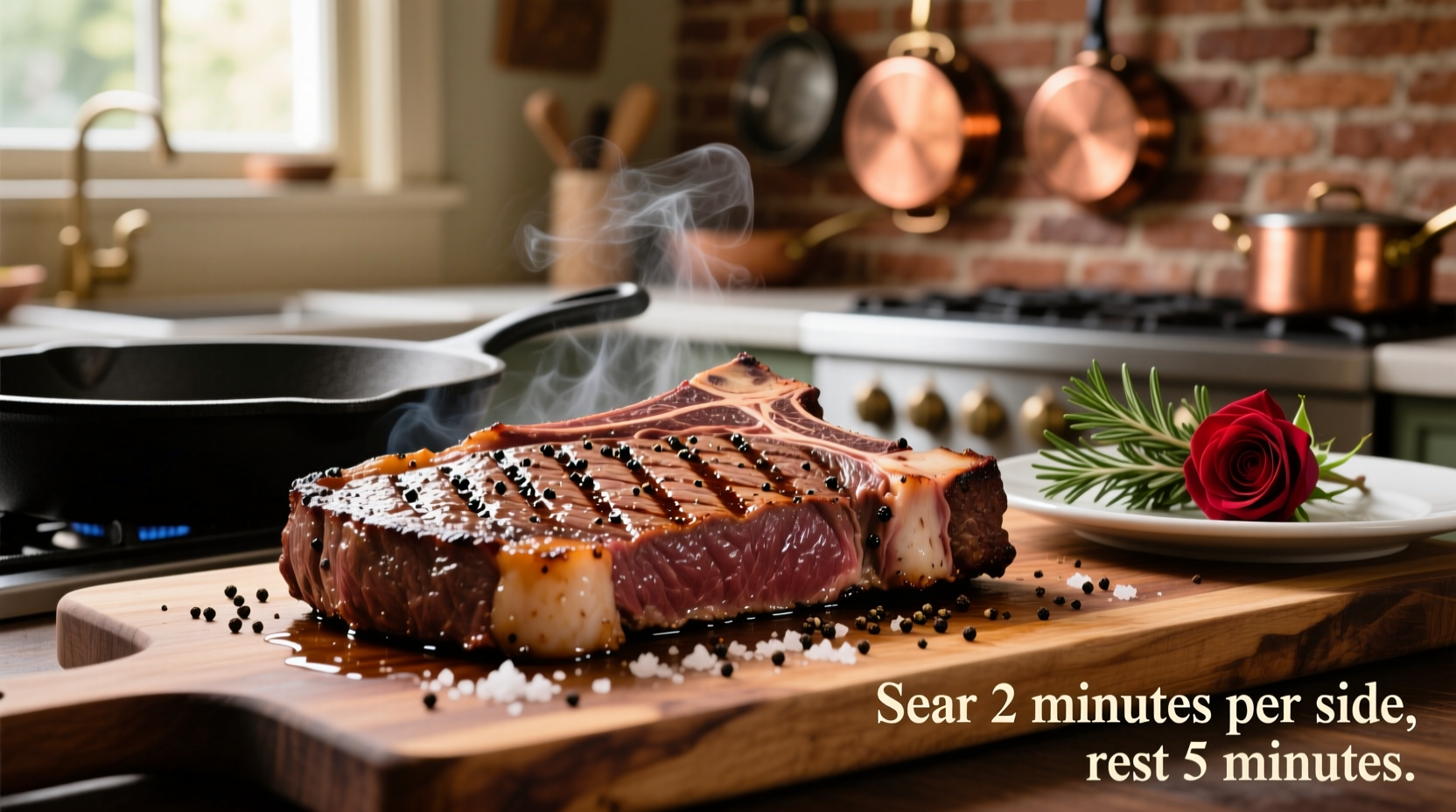To cook perfect rib of beef, season generously with salt and herbs, roast at 220°C (425°F) for 20 minutes, then reduce to 180°C (350°F) until desired doneness (15-20 minutes per 500g for medium-rare), and rest for at least 30 minutes before carving. This method ensures a beautifully browned exterior with a perfectly pink, juicy interior every time.
There's nothing quite like a perfectly roasted rib of beef—crisp, golden crackling, fragrant herbs, and tender, rosy meat that melts in your mouth. Whether you're preparing Sunday roast for family or hosting a special celebration, mastering this classic cut transforms ordinary meals into extraordinary occasions. Follow this detailed guide to achieve restaurant-quality results in your own kitchen.
Essential Preparation: Setting Up for Success
Proper preparation makes the difference between good and exceptional roast beef. Start with these critical steps 24 hours before cooking:
- Choose quality meat: Select USDA Prime or Choice grade with even marbling and bright red color
- Bring to room temperature: Remove from refrigerator 3-4 hours before cooking for even heat distribution
- Dry the surface: Pat thoroughly with paper towels to ensure proper browning
- Season generously: Use coarse sea salt (1 tablespoon per kg) and freshly cracked black pepper
For maximum flavor development, consider dry brining—rub salt on the meat 24 hours before cooking, then refrigerate uncovered. This technique draws out moisture initially, then allows the meat to reabsorb seasoned liquid, enhancing both flavor and texture.

The Science-Backed Roasting Process
Understanding the cooking science behind rib of beef ensures consistent results. The two-phase roasting method leverages both high and moderate heat for optimal texture:
| Cooking Stage | Temperature | Time per 500g | Internal Target |
|---|---|---|---|
| Initial Sear | 220°C (425°F) | 20 minutes | N/A |
| Main Roasting | 180°C (350°F) | 15-20 minutes | 52-55°C (125-130°F) for medium-rare |
| Carryover Cooking | Resting | 30+ minutes | Rises 5-10°C (10-15°F) |
According to USDA Food Safety and Inspection Service guidelines, beef should reach a minimum internal temperature of 63°C (145°F) for safety, but culinary professionals often recommend lower temperatures for premium cuts like rib of beef when properly handled. The critical factor is using an accurate meat thermometer inserted into the thickest part of the meat, avoiding bone contact.
Timing Your Perfect Roast: A Step-by-Step Timeline
Follow this precise cooking timeline for foolproof results. This evolution of cooking stages ensures proper protein denaturation and collagen breakdown:
- 24 hours before: Dry brine with salt (optional but recommended)
- 4 hours before: Remove from refrigerator to reach room temperature
- 30 minutes before: Preheat oven to 220°C (425°F)
- Start: Place meat fat-side up in roasting pan, high heat for 20 minutes
- After 20 minutes: Reduce oven to 180°C (350°F), continue roasting
- When 10°C (15°F) below target: Remove from oven (carryover cooking will finish the process)
- Immediately after removal: Tent loosely with foil
- 30-60 minutes resting: Critical for juice redistribution before carving
Context Matters: When to Adjust Your Technique
While the standard method works for most situations, certain conditions require technique adjustments:
- For larger roasts (over 4kg): Extend initial high-heat phase to 25-30 minutes for better browning
- In convection ovens: Reduce temperature by 20°C (25°F) and check 15% earlier
- For well-done preference: Cook to 63°C (145°F) internal temperature, but expect less juiciness
- With bone-in vs. boneless: Bone-in requires 5-10% more cooking time but yields more flavor
Professional chefs like those at the Culinary Institute of America emphasize that oven temperatures vary significantly between models. Always rely on internal meat temperature rather than strict timing—your thermometer is your most essential tool for perfect results.
Mastering the Resting Phase
Many home cooks rush this critical step, but proper resting transforms your roast:
- Loosely tent with foil—never seal tightly which creates steam and softens the crust
- Rest for minimum 30 minutes (45-60 for roasts over 3kg)
- Place on a wire rack to prevent bottom from steaming in its juices
- During resting, internal temperature rises 5-10°C (10-15°F) while juices redistribute
Skipping proper resting causes precious juices to flood out when carving, resulting in dry meat. This food science principle, documented in Harold McGee's On Food and Cooking, explains why patience yields dramatically better results.
Professional Carving Techniques
After all your careful preparation and cooking, proper carving ensures you enjoy the fruits of your labor:
- Use a long, sharp carving knife with a thin blade
- Cut perpendicular to the bone for individual ribs
- Slice against the grain for maximum tenderness
- Maintain consistent 1.5cm (½ inch) thickness for even serving
- Carve only what you'll serve immediately to preserve warmth
Pair your perfectly roasted rib of beef with traditional Yorkshire puddings, roasted vegetables, and a rich jus made from the pan drippings. For wine pairings, full-bodied reds like Cabernet Sauvignon complement the rich beef flavors beautifully.
Troubleshooting Common Issues
Even experienced cooks encounter challenges. Here's how to solve frequent rib of beef problems:
- Dry meat: Usually from overcooking or insufficient resting. Solution: Cook to lower temperature and extend resting time
- Pale crust: Surface wasn't dry enough or oven temperature too low. Solution: Pat meat thoroughly and ensure proper preheating
- Uneven cooking: Often from improper placement in oven. Solution: Rotate pan halfway through cooking
- Excessive smoke: Fat dripping onto oven elements. Solution: Place water in bottom of oven during high-heat phase
Frequently Asked Questions
How long should I cook a 3kg rib of beef for medium-rare?
For medium-rare, cook your 3kg rib of beef for approximately 20 minutes at 220°C (425°F), then reduce to 180°C (350°F) for 75-90 minutes, or until internal temperature reaches 52-55°C (125-130°F). Always verify with a meat thermometer rather than relying solely on timing.
Should I cook rib of beef with the fat side up or down?
Always position rib of beef with the fat side up. As the fat renders during cooking, it naturally bastes the meat, enhancing flavor and moisture. Cooking fat-side down prevents this self-basting process and can lead to uneven cooking.
Why does my roast beef turn out tough?
Tough roast beef typically results from either undercooking (collagen hasn't properly broken down) or overcooking (muscle fibers have tightened excessively). For rib of beef, aim for 52-55°C (125-130°F) for medium-rare and ensure proper resting time of at least 30 minutes before carving.
Can I cook rib of beef the day before and reheat?
While possible, reheating rarely matches fresh results. If necessary, cook to medium-rare, cool quickly in the refrigerator, then reheat gently at 150°C (300°F) until internal temperature reaches 50°C (120°F). However, carving and serving immediately after proper resting yields superior texture and flavor.
How do I know when rib of beef is done without a thermometer?
Without a thermometer, use the finger test: compare the firmness of the meat to the fleshy part of your palm below the thumb. Raw feels like touching thumb to index finger; rare to middle finger; medium to ring finger; well-done to pinky. However, a digital thermometer remains the most accurate method for perfect results.











 浙公网安备
33010002000092号
浙公网安备
33010002000092号 浙B2-20120091-4
浙B2-20120091-4